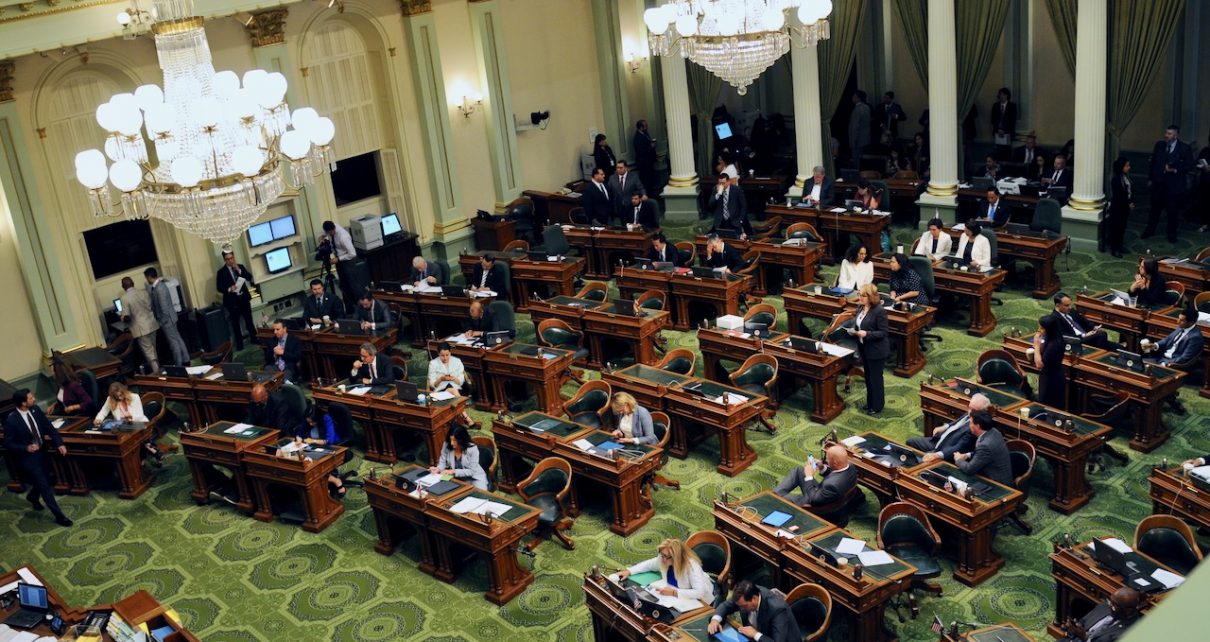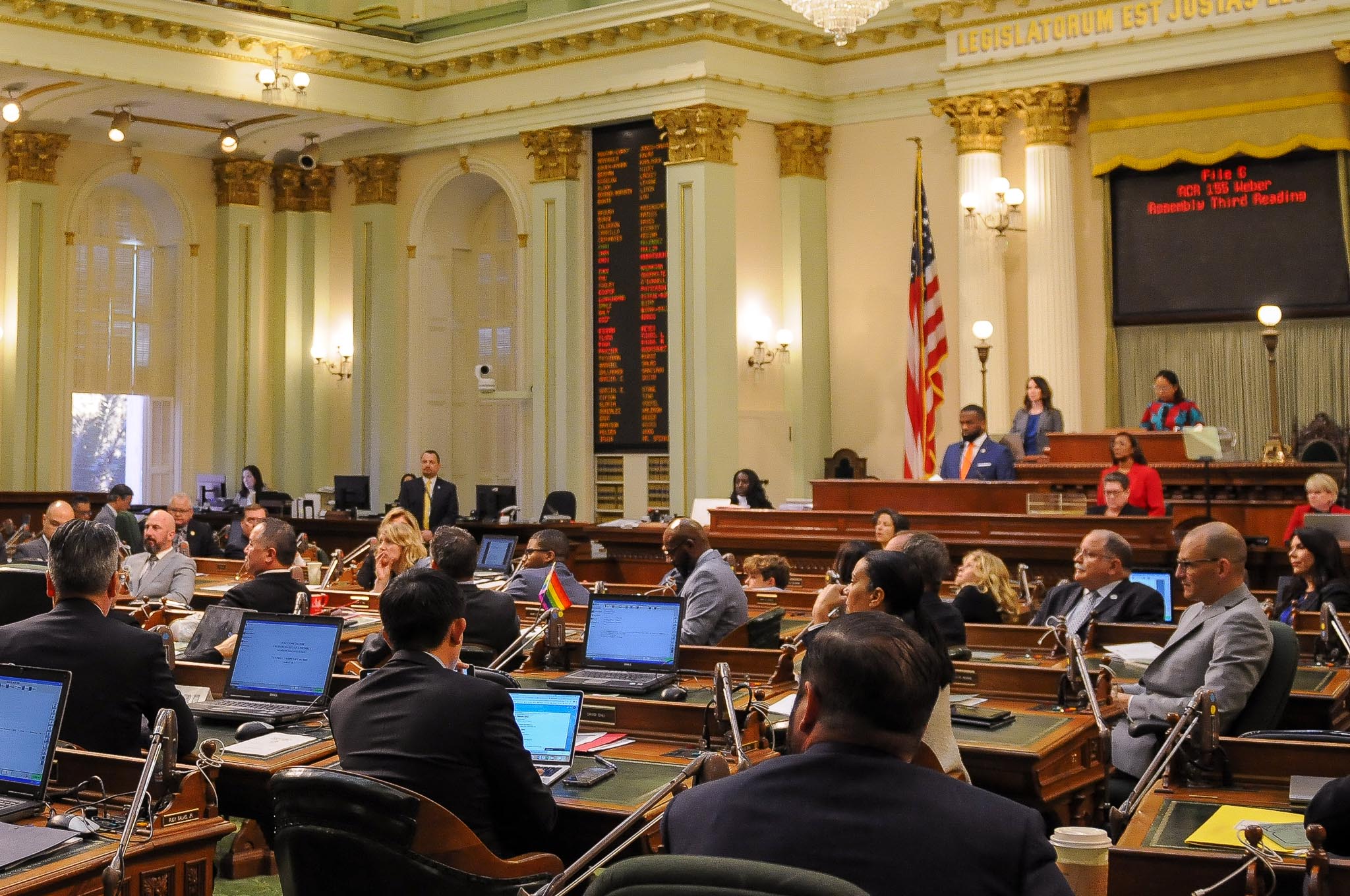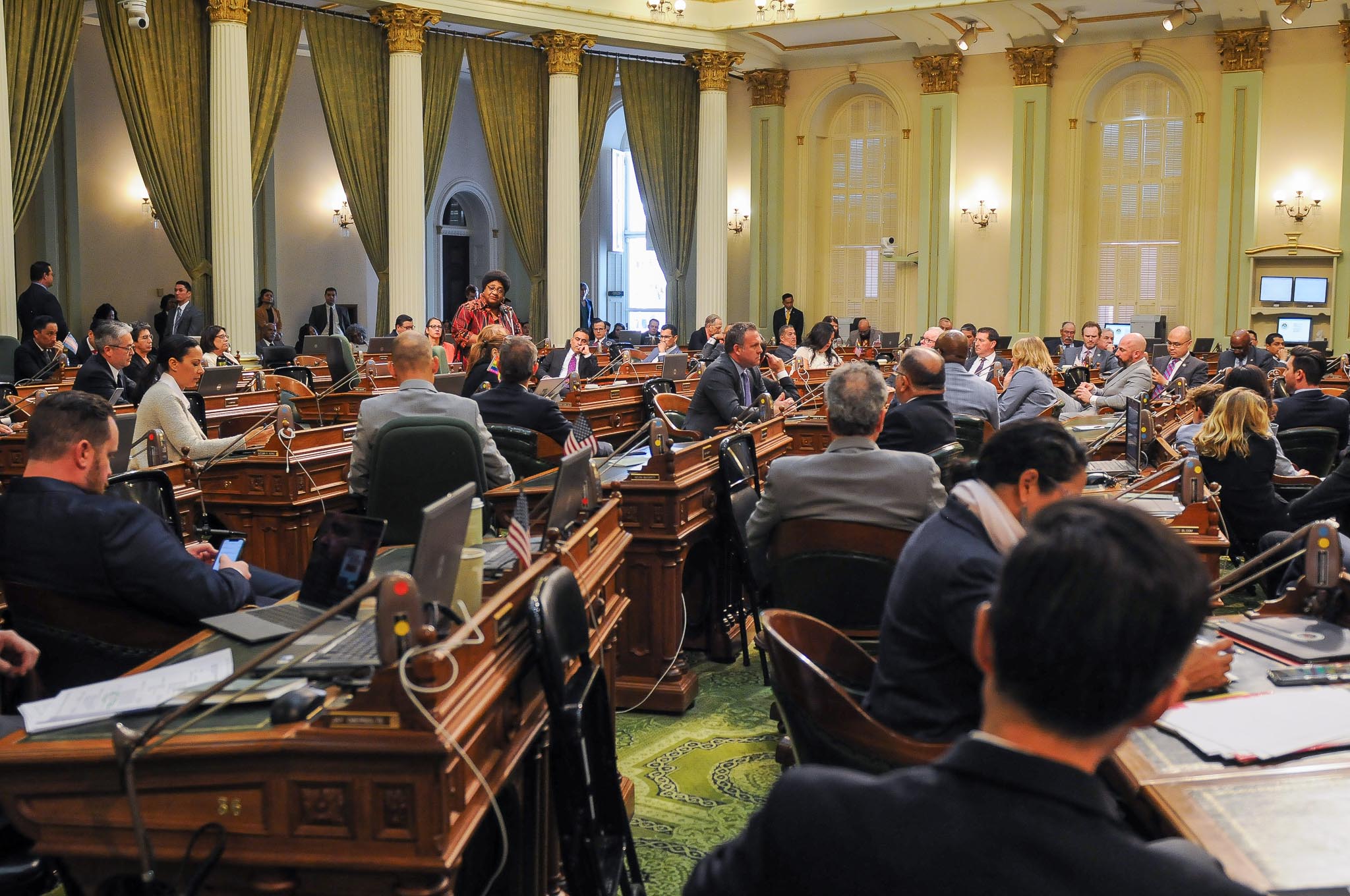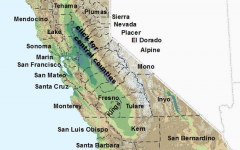
California State Assembly Chamber. (Photo: Kevin Sanders for California Globe)
Private Rights of Action in California Legislation
California statutes, and legislation, either create a private right or action, or they prevent a private right of action
By Chris Micheli, April 20, 2022 6:37 am
There are a handful of bills each year in the California Legislature that create or preclude a “private right of action” to enforce civilly the provisions of a statute. In most instances, state or local governments are charged with enforcing violations of a statute. In some statutes, however, a private citizen is lawfully allowed to enforce the provisions of a state law. Because a private person can enforce the law and file a civil action (or civil suit), this type of provision is called a private right of action.
California statutes, and legislation, either create a private right or action, or they prevent a private right of action.
Private Right of Action Created
The following are examples from bills to specify that the bill does create a private right of action:
A private cause of action lies against a person who intentionally distributes by any means ___.
Any person, other than an officer or employee of a state or local governmental entity in this state, may bring a civil action against any person who does any of the following: ___.
A person may bring a civil action for actual damages, compensatory damages, punitive damages, injunctive relief, any combination of those, and any other appropriate relief, including statutory damages, against any person or entity that engages in ___.
No Private Right of Action Allowed
The following are examples from bills to specify that the bill does not create a private right of action:
This chapter shall not be deemed to create a private right of action, or limit any existing private right of action.
This chapter does not create a private right of action.
This division does not create or imply a private right of action for a violation of this division.
Legislative Intent
With the examples above, there are explicit provisions from a statute that allow or prohibit a private right of action. In other instances, readers may find the private right of action language contained in a statement of legislative intent. The following is an example from a bill that utilizes a legislative finding and declaration:
The Legislature finds and declares that neither the original provisions of this section, nor any subsequent amendments to it, were intended to create a private right of action. However, nothing in this subdivision shall restrict or expand the existing right of any party to seek relief from noncompliance with this section pursuant to a writ of mandate.
In all of these instances, there is language addressing the question of whether violation of a statute may be enforced by a private citizen, as opposed to a governmental entity. In some statutes, either a private party or a governmental entity can enforce the law.
- Recent Legal Challenges to California Statutes - December 4, 2025
- Interpretation of International Commercial Disputes - December 4, 2025
- Volume of Daily Journal Letters Submitted by Bill Authors – 2025 Update - December 3, 2025




